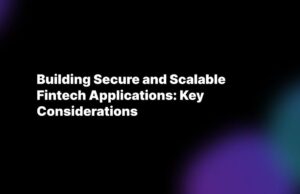Have you heard? Lightning addresses are incompatible with bitcoin addresses.
This implies a user cannot transmit funds straight from their lightning address to a bitcoin address, or vice versa, without first moving their lightning coins into their bitcoin account.
It seems contradictory, given that layer-two technology for transacting off-chain is advertised as a method to improve the protocol’s scalability – allowing for more users and transactions. Despite this, there is a mismatch between new off-chain lightning transactions and traditional on-chain Bitcoin transactions.
However, one developer has been working on a potential solution that was inspired by atomic swaps, an interoperability technique that has been steadily gaining traction.
Lightning Labs engineer Alex Bosworth was researching atomic swap, a mechanism that enables the native cryptocurrency of one blockchain to be transferred with another without a third party, when it occurred to him that it might be used to exchange lightning for traditional on-chain bitcoins.
This technique, known as “submarine swaps,” is now being tested on the live lightning network.
Nevertheless, attempting so might be harmful. When announcing the project’s mainnet debut, Bosworth acknowledged that employing submarine swaps at this time is a dangerous endeavor, similar to transactions on the still-developing lightning network.
Bosworth has established a technological link between the bitcoin blockchain and the lightning network as part of his contribution. Currently, the technology only permits the transfer of money from a blockchain to the lightning network, and not vice versa.
However, exchanging lightning network payments for on-chain currency should one day be feasible.
And, even beyond that, Bosworth anticipates a future in which any bitcoin or cryptocurrency wallet supports the technology, making it simple to transmit Litecoin, Dogecoin, or any other coin to a lightning address.
Does the utopian future of this technology shine?
However, Bosworth’s goals for swaps extend well beyond the scope of these uses.
A few months ago, Bosworth gave a conference in which he detailed his vision for the technology. In the talk, he went so far as to envisage a “utopian swap future,” putting an emphasis on the variety of different types of swaps.
HTLCswaps, for example, may make it possible for users to trade lightning payments for data without the need of trusting one another.
However, there is still a significant distance to go before this vision can become a reality, particularly in regard to the exchange of submarines. For example, Bosworth has identified “many difficulties” during the process of testing.
Swaps could be something that was extremely inexpensive to give, similar to what a mobile phone could do. However, it is important to note that one of the issues with this approach is that underwater swaps are more difficult to perform when a blockchain’s transaction volume is high. This is because underwater swaps require more time and energy.
When Bosworth was working with the technology on the Bitcoin testnet, which is presently being inundated with transaction spam that is slowing down the network, he learned this the hard way.
He persists in his pursuit of her despite this. Instead, the short-term goal that Bosworth has set for himself is to find a means for efficiently screening through all of this spam in order to make certain that devices are always capable to managing a subsurface exchange.




